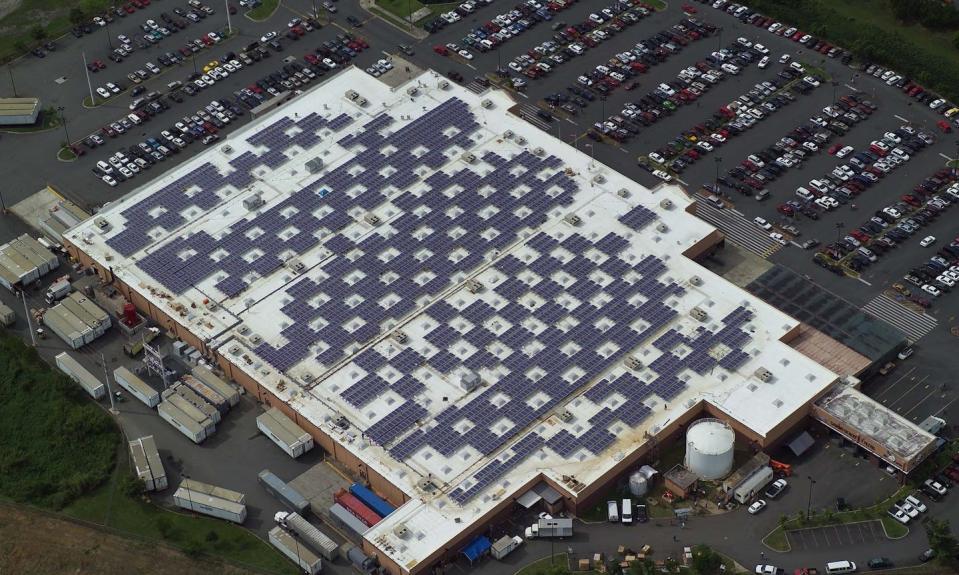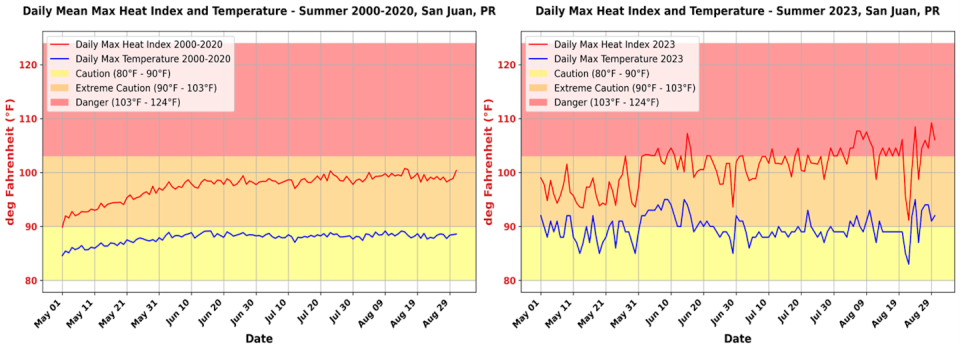Preparing for the Atlantic hurricane season is always a priority in the Caribbean, especially when forecasts predict large numbers of storms, as is the case for 2024. The region’s most destructive storm in recent years, Hurricane Maria, struck in September 2017, causing unprecedented devastation in Puerto Rico, Dominica, St. Croix and other islands.
Maria killed more than 3,000 people and caused approximately $96 billion in damage. It devastated Puerto Rico’s power system, leaving 1.5 million customers in the dark for up to 328 days — the longest power outage in U.S. history. These outages had cascading effects on other infrastructure, such as water and communications systems.
Today, the Caribbean faces new climate-related challenges. Prolonged extreme heat and humid days are increasing due to accelerated warming of ocean waters.
In response to these increasingly common and extreme weather events, I and a dozen other researchers founded the Caribbean Climate Adaptation Network in 2023. Our goal is to connect scientists with communities and government agencies in the U.S. Virgin Islands and Puerto Rico and provide scientific information that can help them prepare for and respond to these emerging climate extremes.
I am a coastal-urban climatologist born in Puerto Rico. Launching this network has been of great importance to me personally. I hope it will strengthen our current longer-term partnerships between leading academic researchers, vulnerable communities, government agencies and utilities on the islands and serve as a platform to reach the entire Caribbean.
Our mission is to develop new ways to represent the coastal urban environment as a unified system – one that puts people at the center and integrates man-made systems, such as buildings and infrastructure, with natural systems, such as the atmosphere, ecosystems and oceans. All these elements face the challenge of a changing climate. We want to support vulnerable communities by conducting research that can make them more resilient to climate change and bring them to the table so that we can create better solutions together.
Learning from Puerto Rico’s recovery
Puerto Rico has made its power grid more resilient in the years since Maria struck, but challenges remain. More than 1 million customers on the island have experienced intermittent outages since the hurricane. In September 2022, Hurricane Fiona – a much weaker Category 1 storm – made landfall in Puerto Rico, causing power outages across the island.
Puerto Rico’s energy system is especially vulnerable because its infrastructure is aging and the island is naturally exposed to recurring extreme events fueled by global warming. Nevertheless, local utilities have made significant progress in strengthening a very complex energy system at all points from generation to distribution. Solar power generation – especially small-scale rooftop installations that can power individual homes and businesses during power outages – plays an important role in making the system more resilient.

In 2023, I led a group of researchers in reconstructing the effects of Hurricane Maria on Puerto Rico. We used a combination of geophysical models, technical models of the electricity and water networks, assessments of damage reports, and socio-economic information to show how proposed hurricane preparedness strategies would impact low-income communities.
We learned that the most effective strategy to protect all community members was to harden the transmission system to deal with the impact of Hurricane Maria-like events in the future. This will probably require new transmission towers that can withstand extremely strong winds and soil saturation. It could also include limiting exposure through measures such as burying power lines. We have not investigated the costs of these solutions, but they would likely be high.
Since then, we have rejoined to reconstruct other major past weather events in Puerto Rico and collect new data, with a focus on resilient energy infrastructure and adaptation to a changing climate. For this work, we install unique sensors on electricity transmission towers and wires, while observing the natural conditions surrounding these means of transmission. These devices continuously measure the mechanical stresses on the towers and the ability of the transmission lines to manage power loads under a variety of weather and demand conditions, including extreme weather conditions.
By reconstructing past storms, collecting new data on the health of Puerto Rico’s infrastructure, and using machine learning algorithms, we plan to develop new predictive modeling frameworks that can anticipate the risks of disruption to the electrical transmission system during extreme weather conditions.
Informing regional action
In recent years, our research group has used satellite observations to detect that the surface temperature of the Caribbean sea is rising by almost 0.5 degrees Fahrenheit (0.5 degrees Celsius) per decade – one of the fastest ocean warmings on Earth. This trend has direct consequences for the risk of frequent and intense hurricanes.
It also affects the ambient temperature on land, including driving in extreme heat. In the summer of 2023, the city of San Juan experienced a prolonged heat wave, with heat indexes above 38 degrees Celsius. This level is considered unhealthy for most people.
Heat warnings and record temperatures forced government officials to scramble to protect students. Public schools took the unprecedented step of canceling classes islandwide. This event demonstrated the importance of monitoring conditions in the Caribbean ocean and anticipating their impacts on people, infrastructure and ecosystems.


My colleagues at the Caribbean Climate Adaptation Network and I believe our findings will be transferable to other Caribbean communities. Our work can also inform coastal areas in the continental US, where critical infrastructure is heavily exposed and storms often hit the most vulnerable people hardest.
We hope our work with communities will lead to broader education and new, actionable science that can guide climate adaptation decisions and investments that reduce risk. In particular, we aim to develop strategies to make island infrastructure much more resilient and adaptable, as well as safeguards to protect communities and maintain a sense of normality in a warmer climate.
This article is republished from The Conversation, an independent nonprofit organization providing facts and trusted analysis to help you understand our complex world. It was written by: Jorge González-Cruz, University at Albany, State University of New York
Read more:
Jorge González-Cruz receives funding from the U.S. National Science Foundation and the National Institute for Standards and Technology.